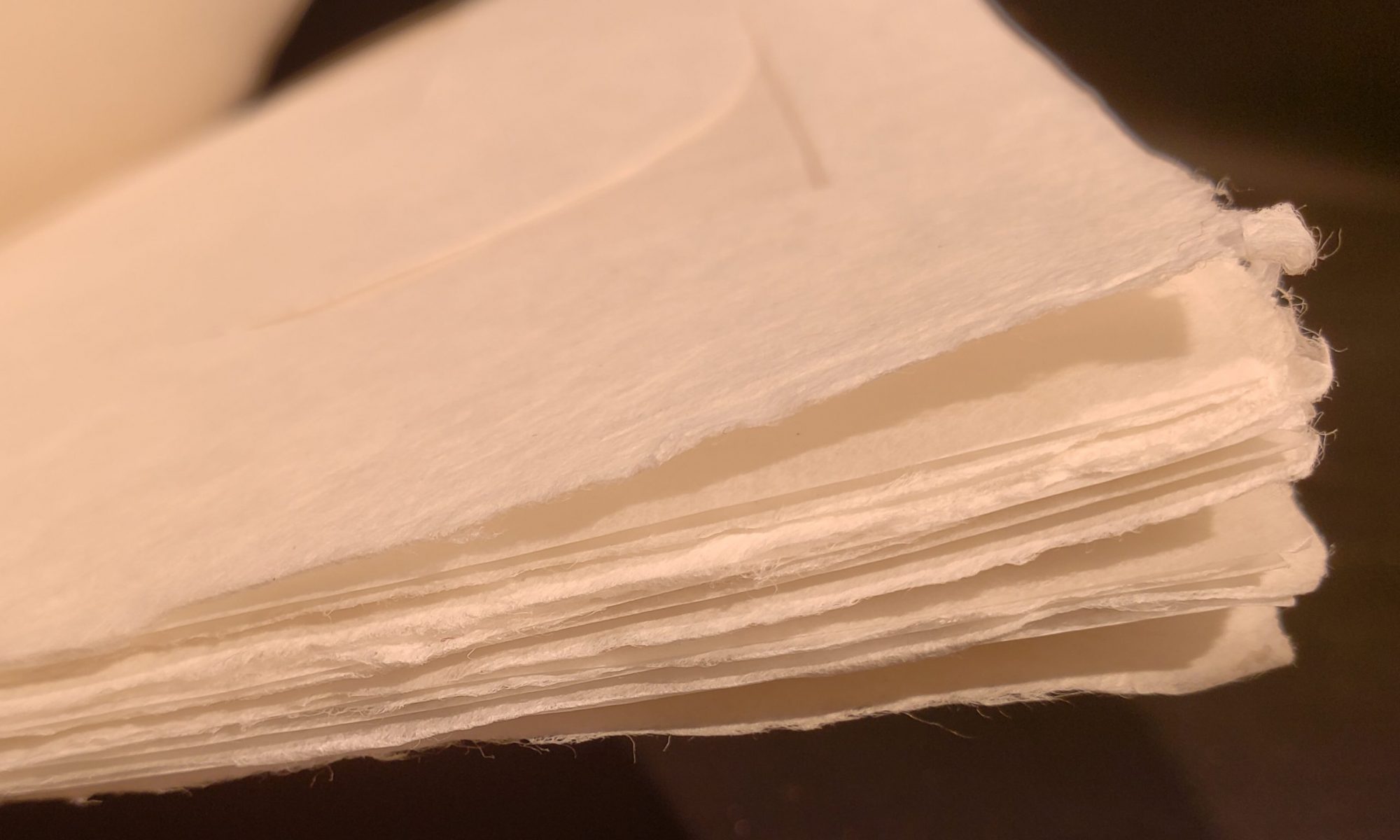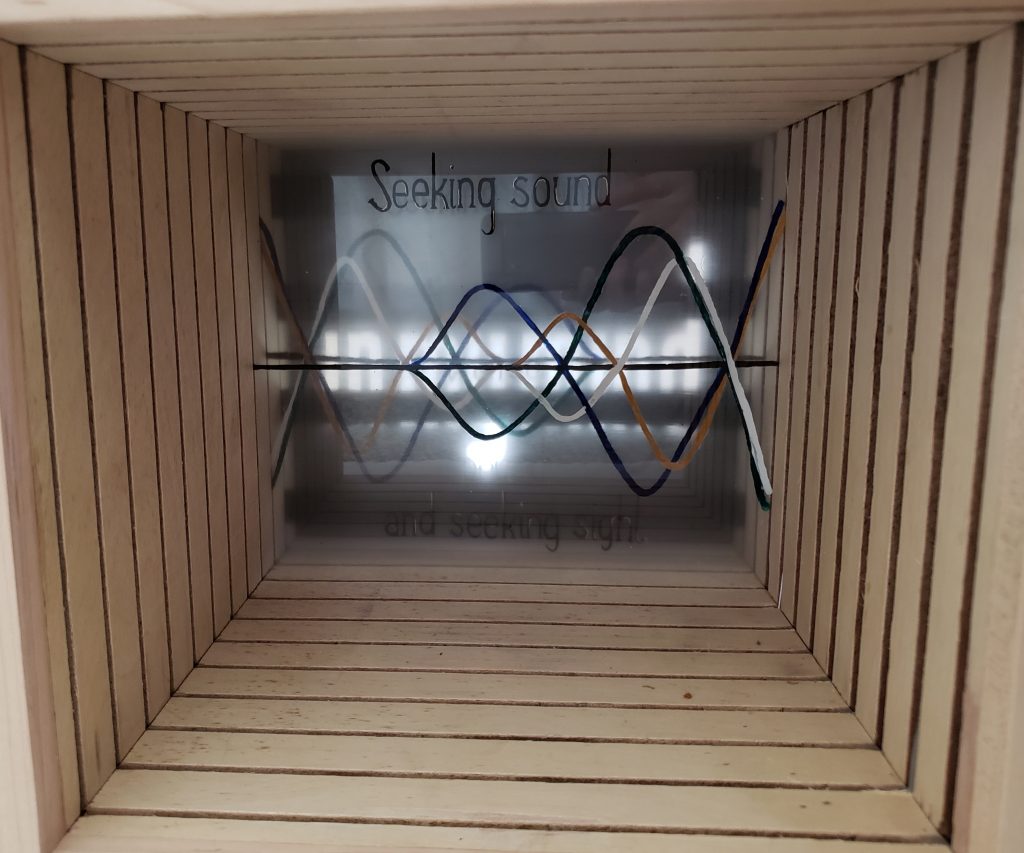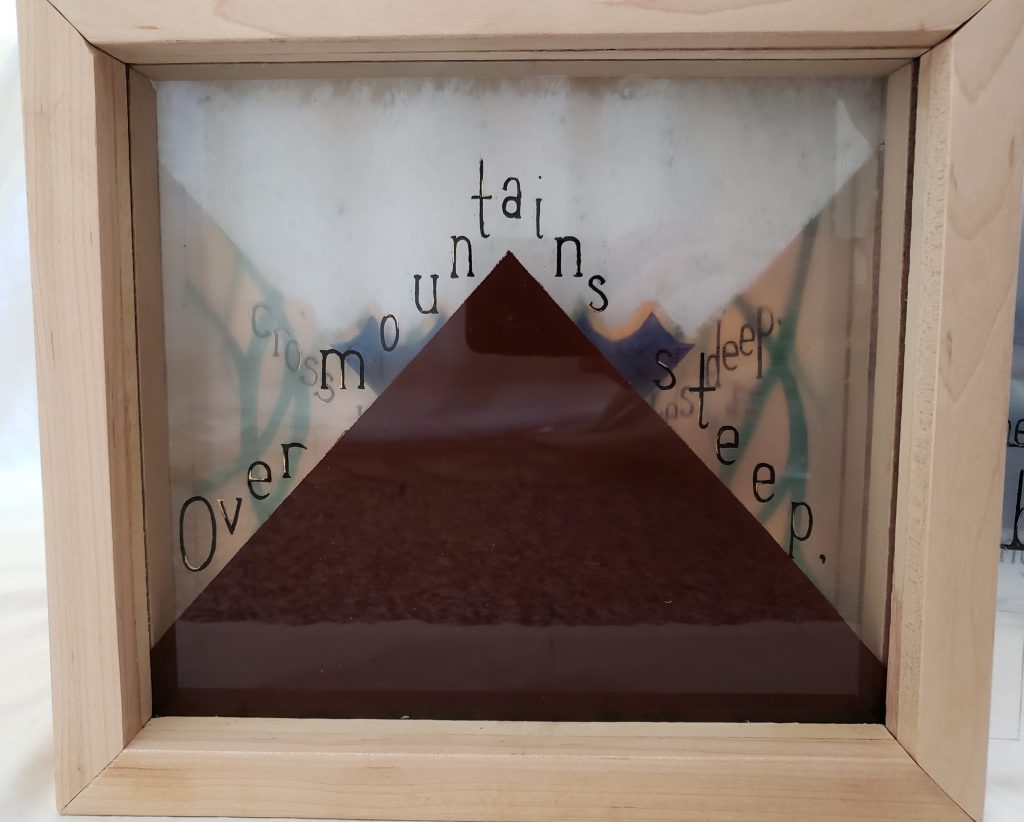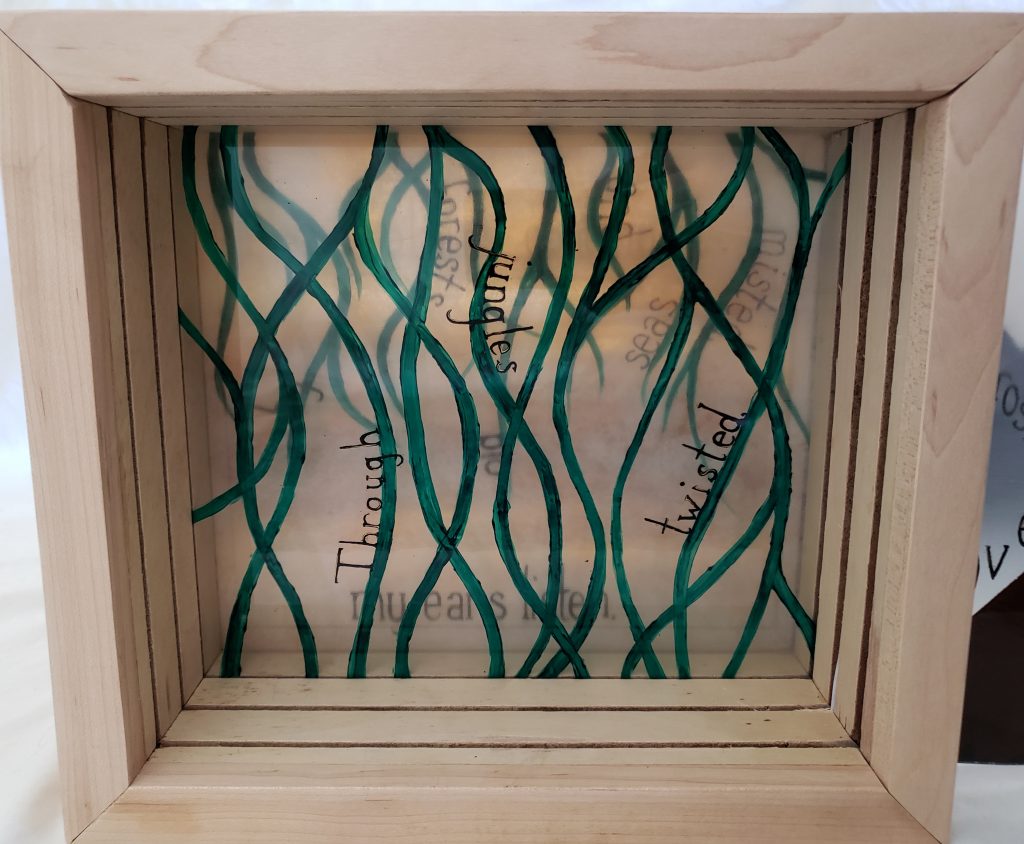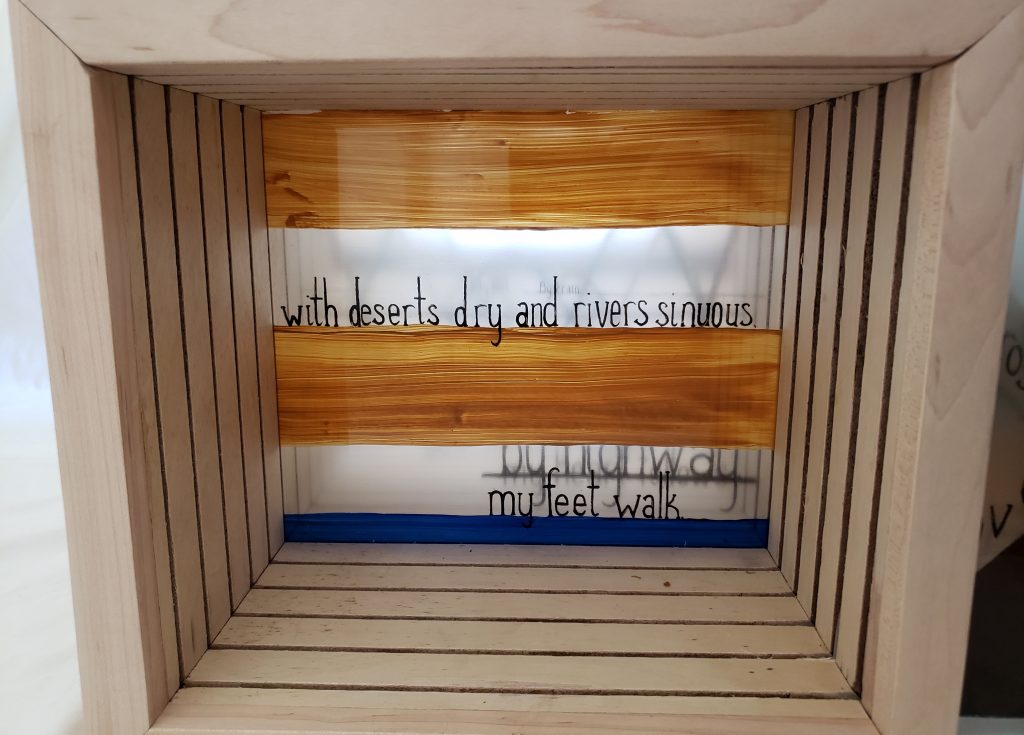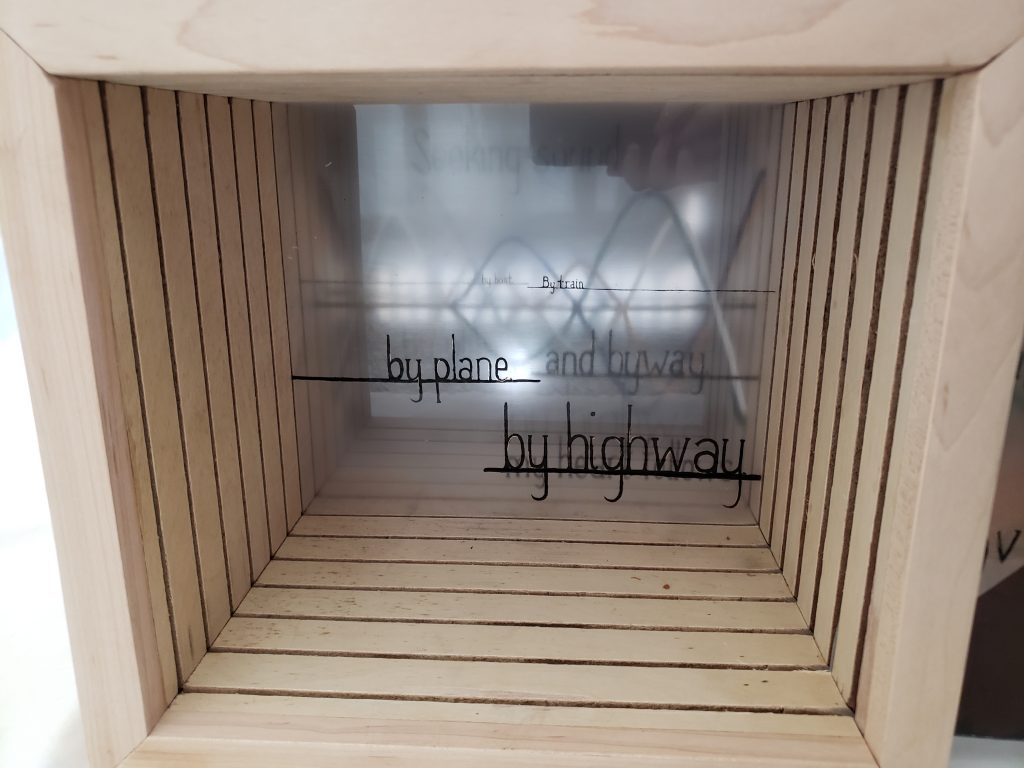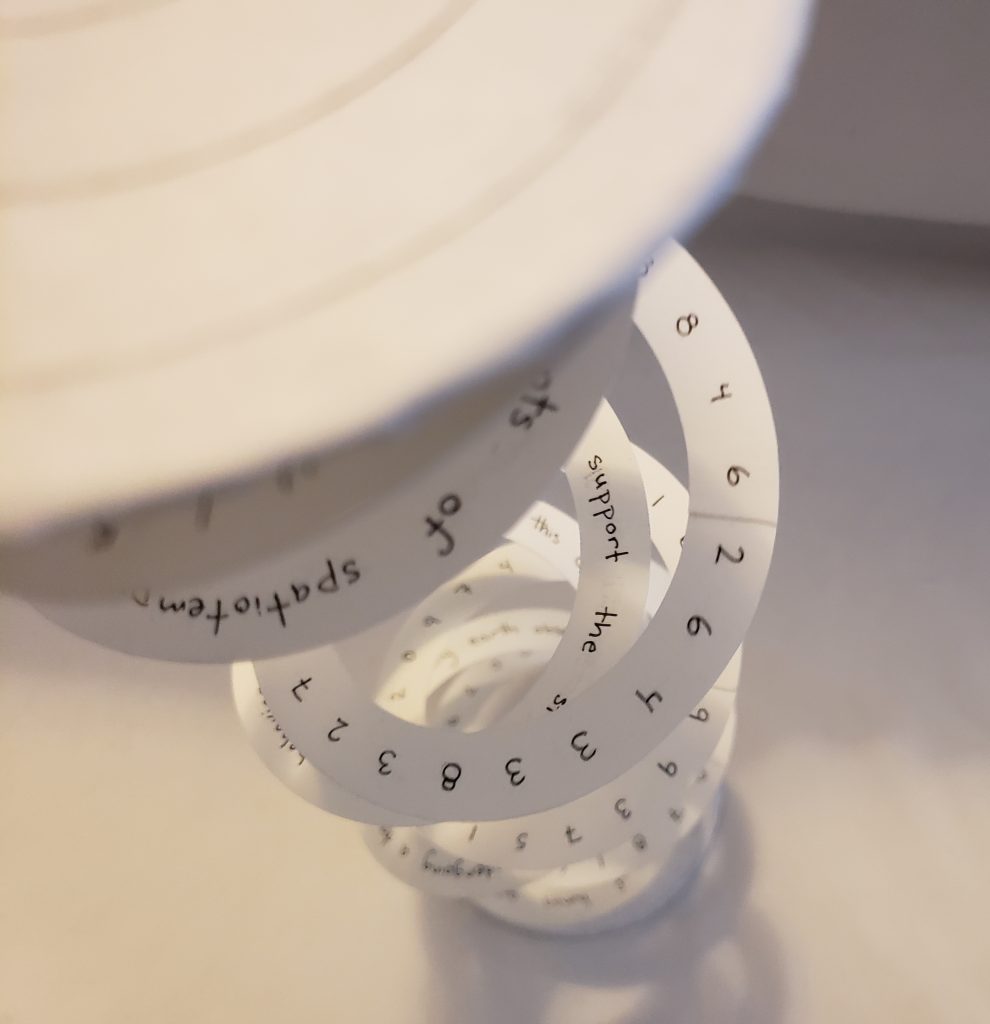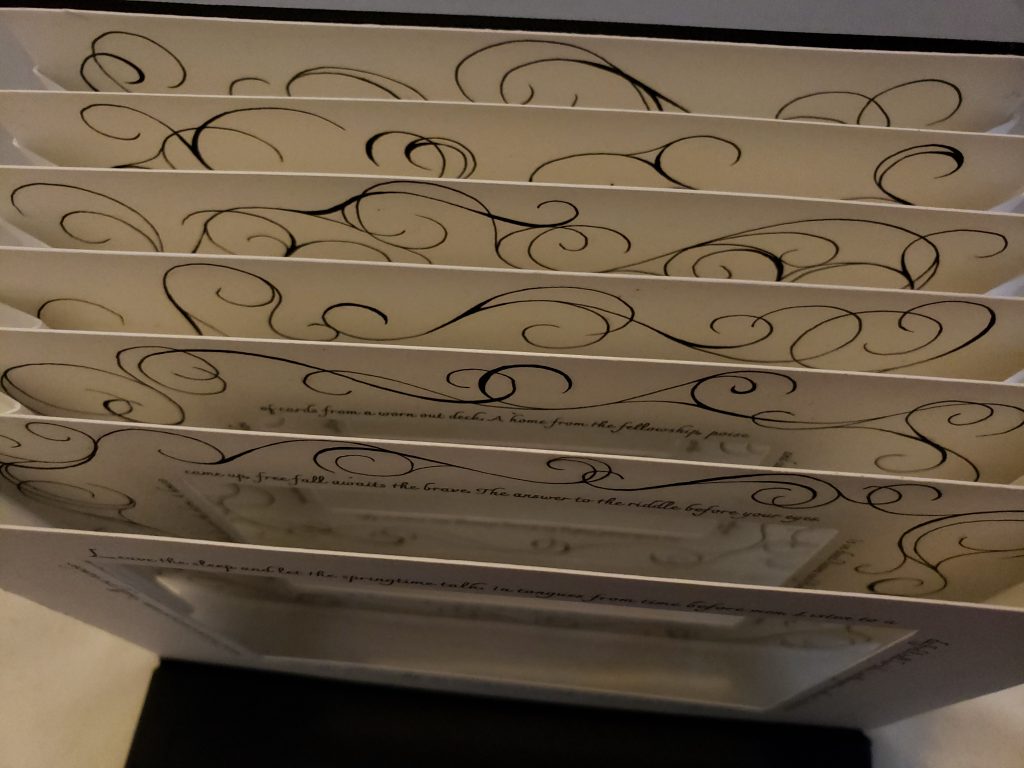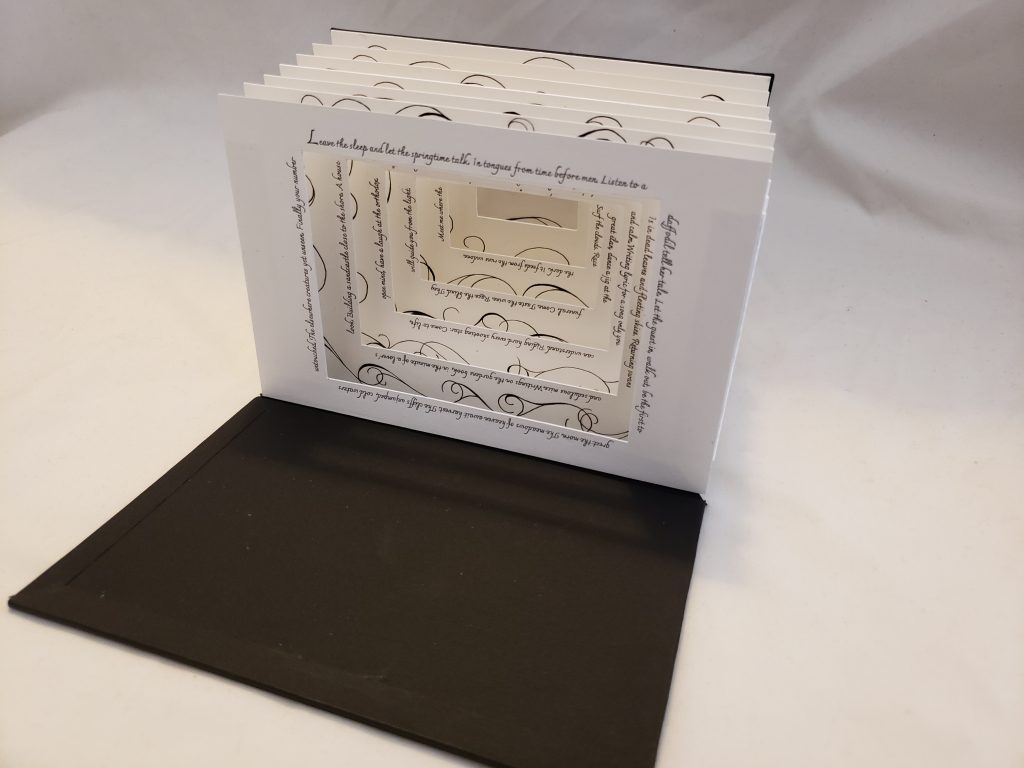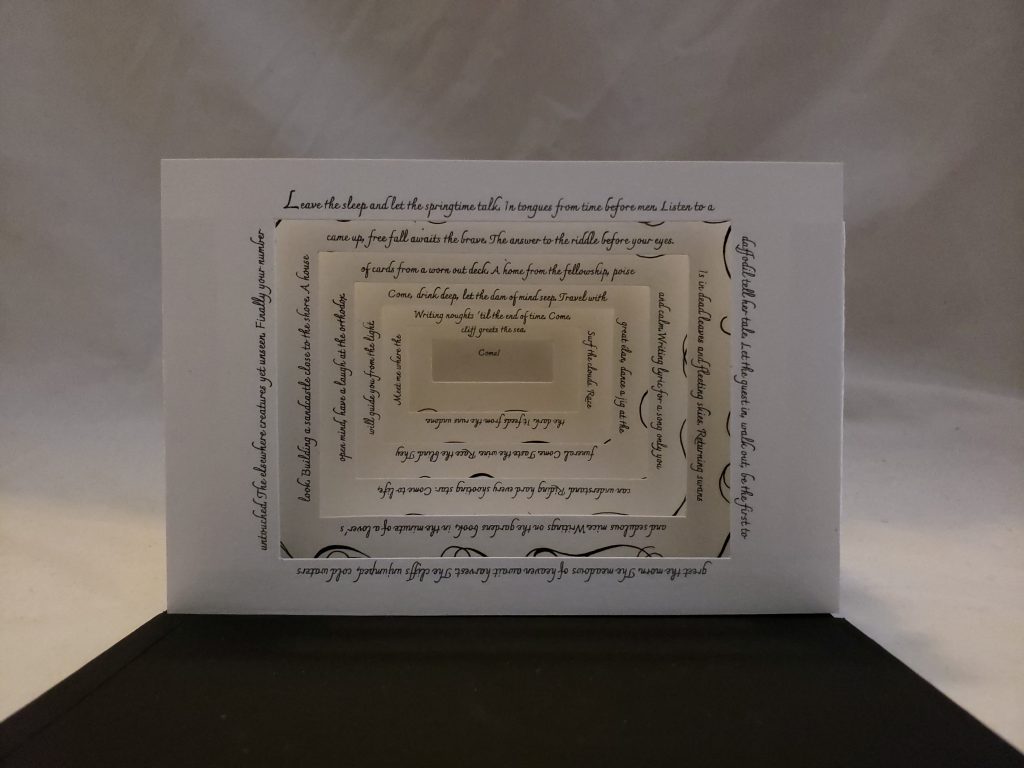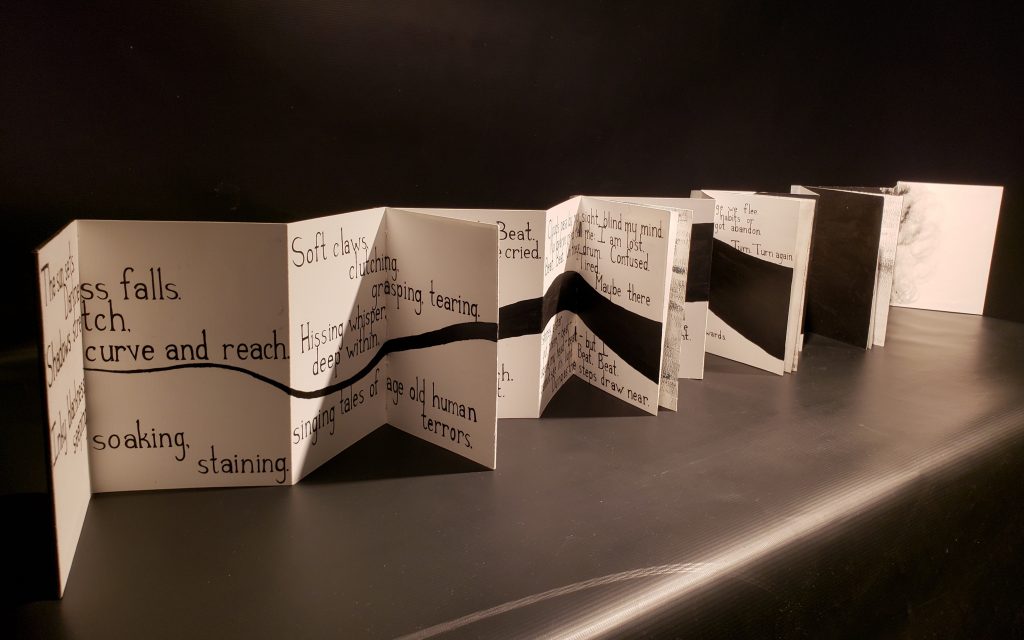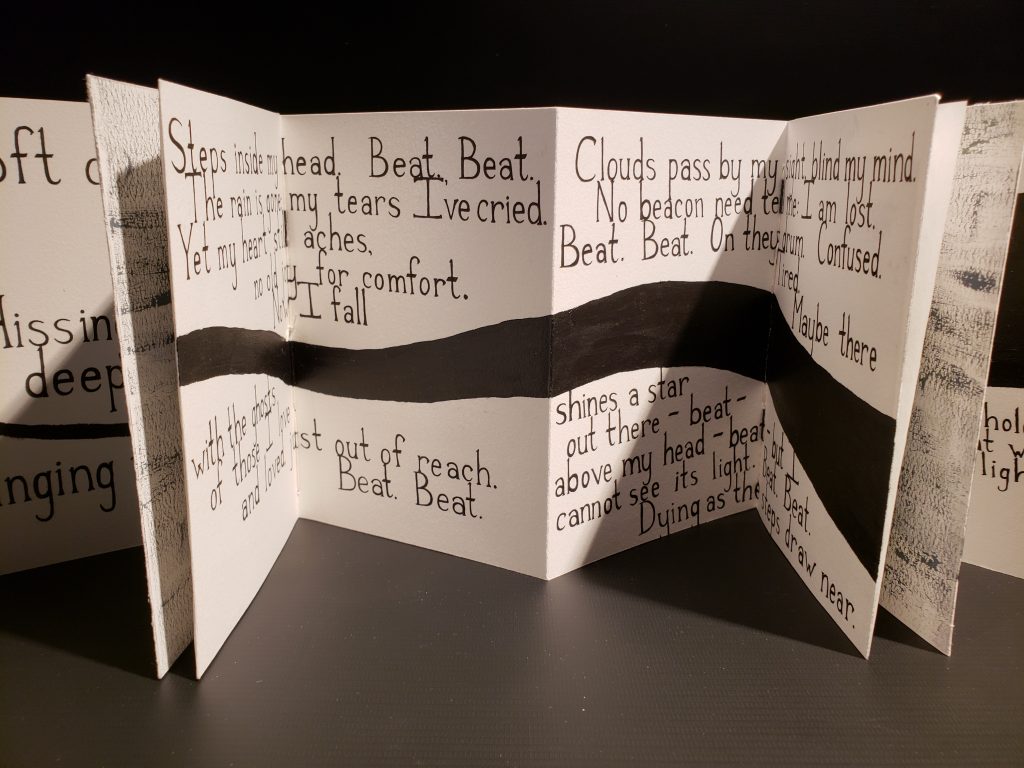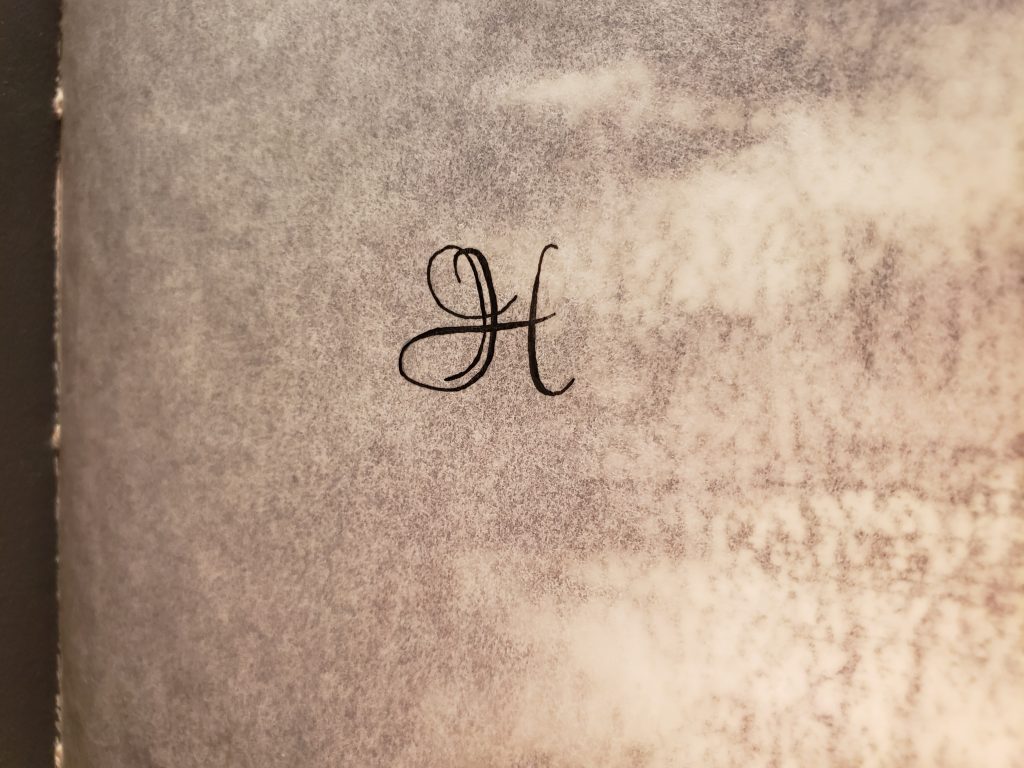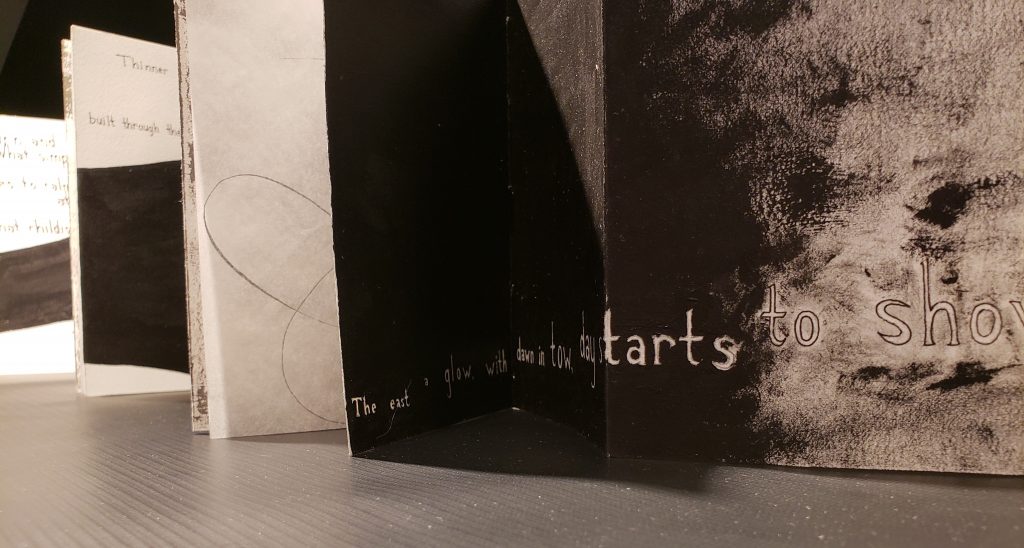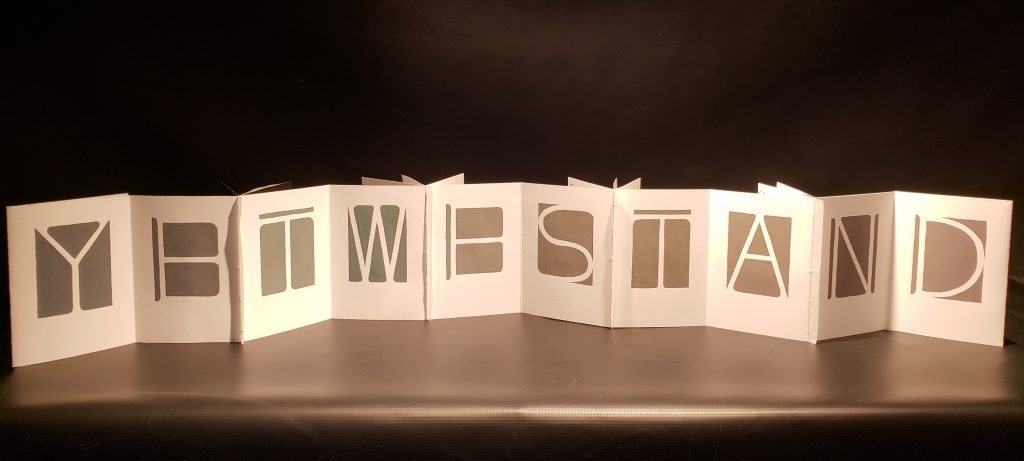2021, In Dedication is a series of posts highlighting artwork created in pursuit of healing. These pieces range across a wide spectrum from express ideas grappling with mental health to meditative works focused on the process.
Record of Chance
Record of Chance, Parts 1-7, is made with archival ink on handmade cotton paper. The
seven pieces, marked with vertical or horizontal lines, are arranged, with thought only to visual flow, and glued on grayish-green paper for mounting to the wall.
Yet, it was the process before this that is the focus of the work.

Each paper has a grid of quarter inch squares, marked only in pencil at their vertices. Starting from the top left-most dot, a six-sided die determines what line is drawn:
- 1 or 2, a horizontal line going from the current dot to the dot immediately right
- 3 or 4, a vertical line going from the current dot to the dot immediately below
- 5 or 6, no line connects to this dot
Once this inked line is drawn, move right along the line of dots to the next dot with no line. The die is rolled again to determine what line connects to the current dot. If a line is not possible to draw from a dot, that option is not considered a valid result when rolling. For example: a dot with no available, unconnected dot to the immediate right can only have a result of 3, 4, 5, or 6. This method of recording chance is continued for the entire page.
This work was inspired most directly by a math book about geometry and proof writing
called, Euclidean Geometry: A Guided Inquiry Approach, by David M. Clark. Among the first
pages of its problem sets is an image of different squares of dots connected (or not) by lines. What would happen if these squares were expanded over the entire page? The second, more indirect, influence comes from the artist Xylor Jane who uses mathematics to create colorful, systematic paintings involving numbers and colors associated with numbers. Might the lines and dots be created through a system? The third aspect of Record of Chance comes from the concept of randomness, removing a piece of human agency in the creation of the artwork itself.
In exploring the concept of randomness within systematic construction, the artwork
touches on questions of true randomness, human perceived randomness, and the intersection of chance and structure. Randomness is “the quality or state of being or seeming random (as in lacking or seeming to lack a definite plan, purpose, or pattern),” as defined in the online Merriam-Webster dictionary. The important word there is seeming. A coin toss, among the most basic random results in daily life, is seemingly random, but is governed by minute changes in condition such as angle, velocity, and surroundings. Thus, is the use of the die, also a perceived daily random outcome, not truly random. True randomness in this artwork becomes even more questionable when the aesthetics of: no more than one line per dot, restrict the outcomes.
In your eyes, are the lines random? There lies the question of human perceived randomness. In placing a dozen dots randomly on a paper, will they be random or random based on your concept of random? Are they evenly spaced? Are there clusters? Do they differ in size? What is the intersection between human perceived randomness and actual randomness?
In considering only randomness of the art, through the use of the six-sided die, this discussion so far neglects the concepts of structure used in Record of Chance. There is not enough space on this page so consider then, this last definition and thought: if structure is, “something arranged in a definite pattern of organization,” define the intersection between randomness and structure.
